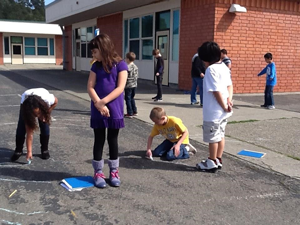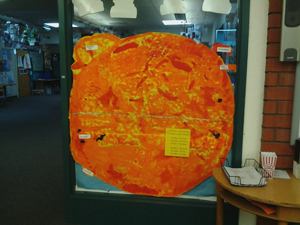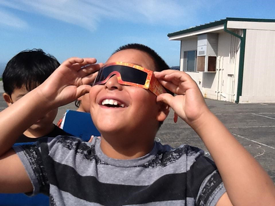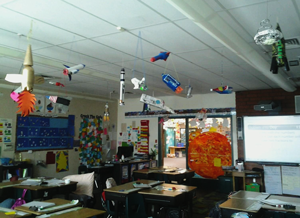Guest Blogger: From a Third-Grade Teacher
Every so often, Multiverse has a guest blogger. Today's guest blogger is Meghan Campbell, a third-grade teacher who took our "Energy from the Sun" workshop -- with positive impacts in her classroom!

Third-grade students exploring the Sun-Earth connection.
After three days spent participating in the “Energy from the Sun” teacher workshop, I promised myself that I would work science, particularly solar science, into my classroom on a regular basis. I have seen firsthand how easy it is for things to fizzle out or be forgotten, but I did not want that to happen with all of my newly acquired activities that align perfectly with the third grade standards. From the start of the school year, I was sure to schedule science in at least once a week.
Starting in January, we dove into the “Eye on the Sky” curriculum [from Multiverse]. I began by having conversations to gauge my students’ prior knowledge of the Sun and its relationship to us here on Earth. We sat down as a group and began a KWL [what I know, what I wonder, what I learned] chart, just like the “Eye on the Sky” curriculum suggests. The results were surprising and diverse. Some students probably knew more than I did and still others said that the Sun is the size of the beach ball and goes around the Earth.

Learning about our Sun.
I have to add that, as a brand new teacher, I was digging around for Earth, moon and stars curriculum at the beginning of the school year. Often what I would find involved reading a nonfiction passage about a topic and then answering questions. While reading and questions have their place in school, I wanted my students to experience the Earth, moon, stars and Sun. Especially because it is a topic that—while these celestial bodies surround us—is a bit abstract for 8 and 9 year olds.
We started by exploring what makes day and night, and actually rotating our Earth models while orbiting the Sun. Students made fabulous observations about what was happening. There were choruses of “oooohs” and “ahhhhs”. Some students struggled transferring their thinking onto paper, but it was great for them to be able to go back to the model, manipulate a miniature Earth, and take a second look.

Looking at the Sun (safely) is so cool!

Model spacecraft made by students hanging from ceiling in classroom.
With the help of the knowledgeable workshop presenters and the well-thought-out curriculum, I feel like I am able to present space and the Sun in a meaningful, tangible way to my students!
1030